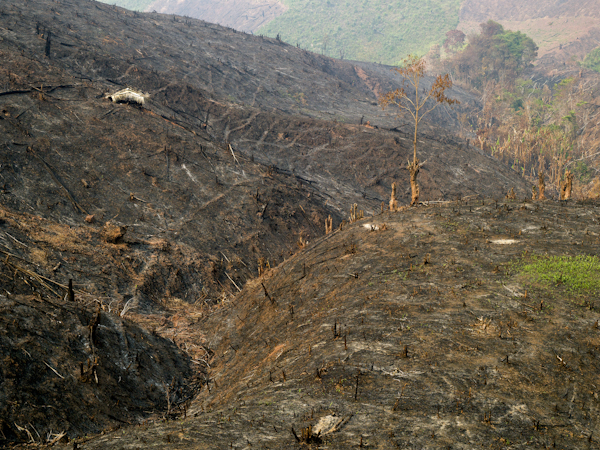Picture of the Week 25.8.14 – The Corridor of Opportunity
By Tessa Bunney on 25 August 2014 Slash and burn landscape, Phongsaly province, Lao PDR.
Slash and burn landscape, Phongsaly province, Lao PDR.
Swidden cultivation or ‘hai’ in Lao consists of cutting the natural vegetation, leaving it to dry and then burning it for temporary cropping of the land, the ash acting as a natural fertiliser. To rebuild the soil fertility after growing crops on a shifting cultivation plot, farmers ‘abandon’ that plot and allow vegetation to regrow for a number of years. This is called the ‘fallow period’. In the meantime, they grow crops on other new plots.
Low population densities, low incomes and low access to inputs in the past made slash and burn agriculture the best land use options for the rural population in the hilly regions of the country. Traditionally, Lao shifting cultivators have tended to apply a fallow period of between ten and twenty years to allow the forest to regenerate. This is not practical any more though, due to population increase, limitations of geography, and government policy. In many villages the fallow period has dropped to three or five years, especially near roads and in areas with higher population density. Fertility decline, weed infestation, forest destruction and loss of biodiversity are all associated with the shortening of fallow periods.
On the northern uplands of Laos alone, farmers are said to grow more than 500 different varieties of glutinous rice. Such seed biodiversity testifies to the continued vibrancy of Laos’ traditional subsistence rice culture which relies more on indigenous seeds rather than on a few high-yielding hybrid varieties favoured by rice exporting countries like Thailand and Vietnam.
Shifting cultivation practices, although remarkably sustainable and adapted to their environment in the past, have come under increasing stress in recent decades, and are now starting to be a major problem in Laos, causing widespread deforestation and watershed degradation. The government has tried to end shifting cultivation by resettling villagers in valleys, introducing land allocation programs, and promoting permanent agriculture – but so far with mixed results.